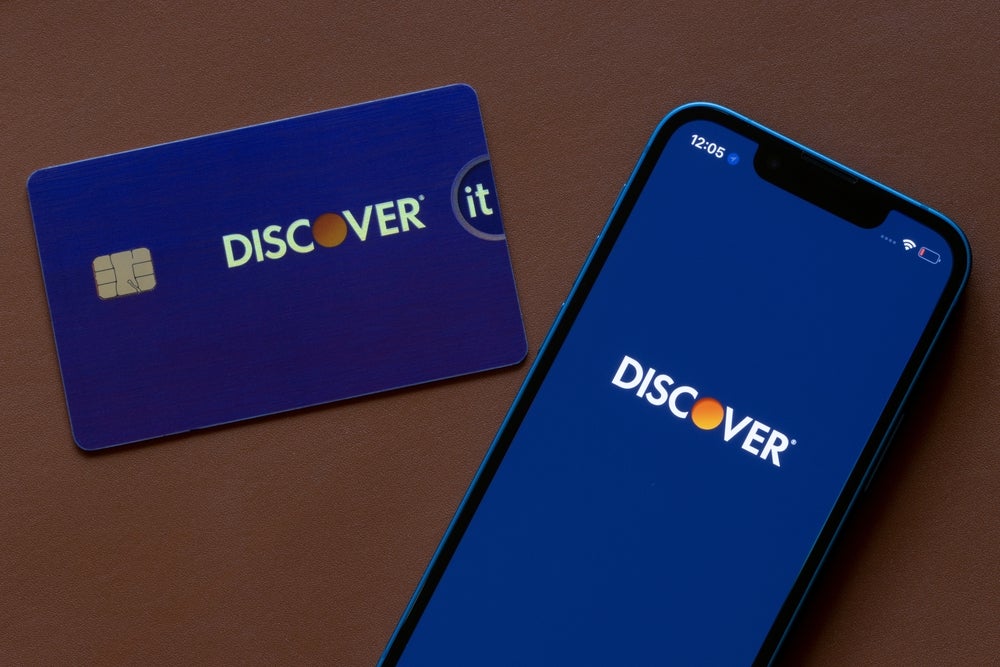
Capital One has agreed an all-stock deal to acquire Discover in a deal valued at $35.3bn.
The all-stock deal represents a premium of 26.6% based on Discover’s closing price of $110.49 on 16 February. At close, Capital One shareholders will own approximately 60% and Discover shareholders will own approximately 40% of the combined company.
By assets, Capital One ranks as the 9th largest US bank with assets of around $468bn at year end 2023. Discover is the 27th largest bank in the US by that measure, with assets of around $150bn. Combined, Capital One/Discover will rank as the sixth largest, behind JPMorgan, Bank of America, Wells Fargo, Citi and US Bank.
Steve Walker, lead analyst within GlobalData’s Financial Service Practice responsible for fintech and thematic content tells RBI: “Capital One’s acquisition of Discover Financial undoubtedly promises size and scale in key strategic areas. The question is whether it’ll make it past the regulators? The combined entity would become the largest credit card lender in America, at a time when many consumers are drawing down on credit amid inflation.
“It would be the fourth largest payments network, giving Capital One the ability to negotiate interchange fees with merchants directly for transactions on their network. And it would create the sixth largest bank in the US. Just last month, the Office of the Comptroller of the Currency said all bank M&A activity would involve tougher, slower processes, particularly those with wide ranging competitive ramifications”.
Richard Fairbank, founder, chairman and CEO of Capital One, said: “From Capital One’s founding days, we set out to build a payments and banking company powered by modern technology. Our acquisition of Discover is a singular opportunity. It brings together two very successful companies with complementary capabilities and franchises. And builds a payments network that can compete with the largest payments networks and payments companies. “Through this combination, we’re creating a company that is exceptionally well-positioned to create significant value for consumers, small businesses, merchants, and shareholders as technology continues to transform the payments and banking marketplace.”

US Tariffs are shifting - will you react or anticipate?
Don’t let policy changes catch you off guard. Stay proactive with real-time data and expert analysis.
By GlobalDataDiscover: the former Sears card, later spun off by Morgan Stanley
Discover has a notable history in US financial services. It is the old Sears store card and was then owned for nine years by Morgan Stanley. Discover was spun off by Morgan Stanley in 2007.
Discover was not without its challenges in 2023. The CEO, Roger Hochschild, stepped down abruptly in August last year as Discover faced a number of regulatory issues. The CEO had been in post since 2018. From 2004, he served as COO.
Deal offers ‘enhanced ability to accelerate growth’
Michael Rhodes, CEO, President, Discover, added: “The transaction brings together two strong brands with enhanced ability to accelerate growth. It maximises value for our shareholders, enabling them to participate in the tremendous upside of the combined company. This agreement underscores the strength of our business and is a testament to the hard work of Discover employees. We look forward to a bright future as part of the Capital One family. And to providing expanded opportunities for our loyal customers.”
The global payments network incorporates 70 million merchant acceptance points in more than 200 countries and territories. However, it is the smallest of the four US-based global payments networks. This acquisition adds scale and investment. The aim is to enable the Discover network to be more competitive with the largest payments networks and payments companies.
Capital One describes the deal as a key foundation in its quest to build a global payments company. It will accelerate its strategy to work directly with merchants to leverage its customer base, technology, and data ecosystem.
Capital One distribution strategy, JD Power success
Capital One’s digital first strategy is evidenced by its radical branch closure programme. As recently as 2010, Capital One ranked as the 14th-largest US bank by branches with 991 outlets. But the bank punched above its weight in winning deposits market share, ranking as 8th largest by that measure. Today, its branch network is well outside the top 20 US banks by that measure, having shrunk to 259 outlets. Capital One still ranks as the 8th-largest US bank by deposits. Distribution strategy is also enhanced by 55 iconic Capital One Cafes in 21 of the country’s 25 largest metro areas.
The bank also continues to win plaudits for its customer service record. For example, it has ranked top in the JD Power National Banking Overall Customer Satisfaction survey for four consecutive years.
Deal creates significant synergies
The transaction is expected to generate expense synergies of $1.5bn in 2027. This represents 26% of Discover operating expenses, plus 10% of Discover marketing expenses). Synergies are driven by common business functions partially offset by targeted investments in the Discover network.
The acquisition is expected to generate network synergies of $1.2bn in 2027. This driven by adding Capital One debit purchase volume and selected credit card purchase volume to the Discover network.
The deal is expected to be more than 15% accretive to adjusted non-GAAP EPS in 2027. The transaction is expected to deliver return on invested capital of 16% in 2027, with an internal rate of return in excess of 20%.
The transaction will further strengthen Capital One’s balance sheet. On a pro forma basis, the combined company would have a CET1 ratio of approximately 14% at closing. Some 84% of company deposits would be insured as of year-end 2023.
The transaction is expected to close in late 2024 or early 2025. This is subject to satisfaction of customary closing conditions, including regulatory approvals and approval by the shareholders of each company.






